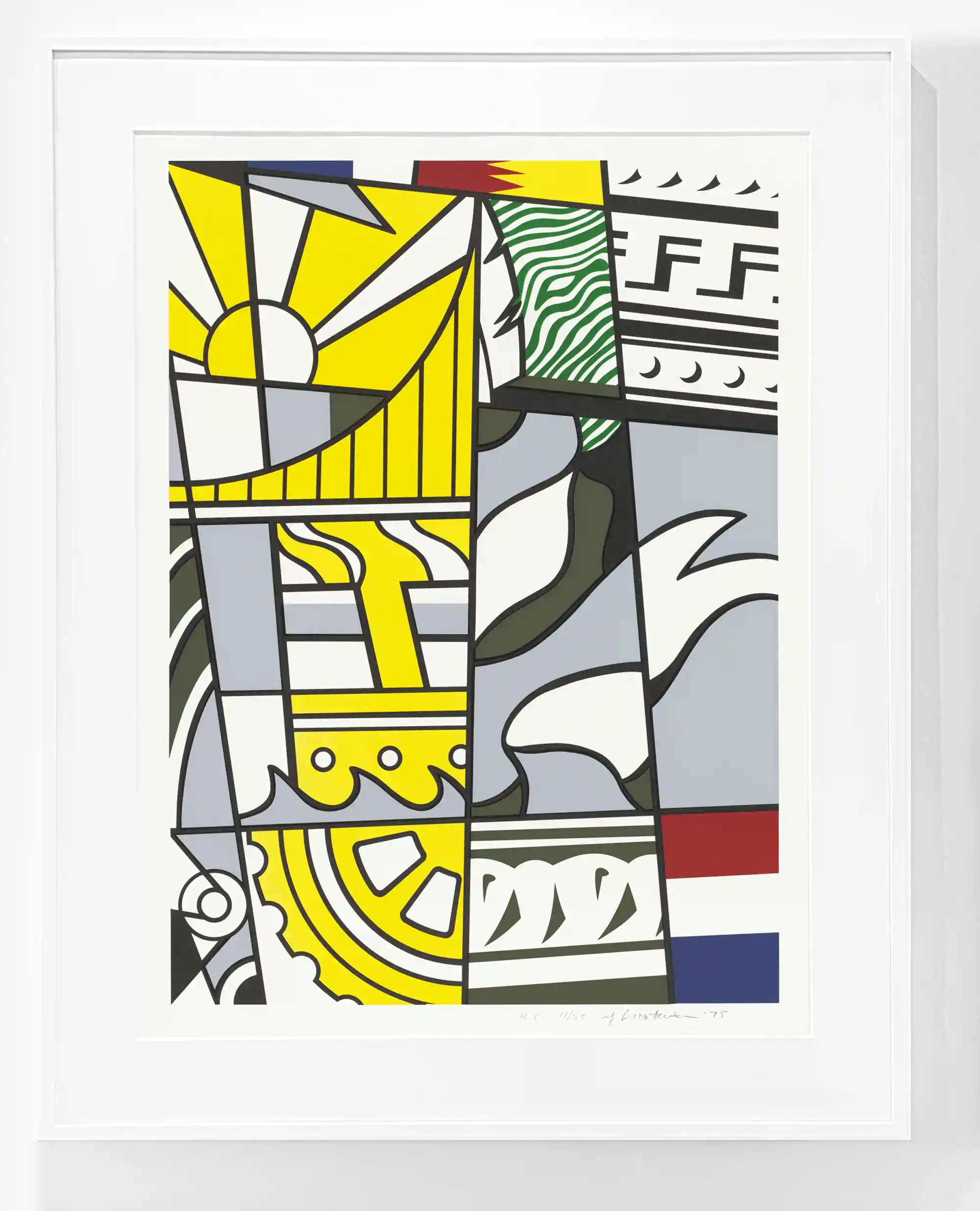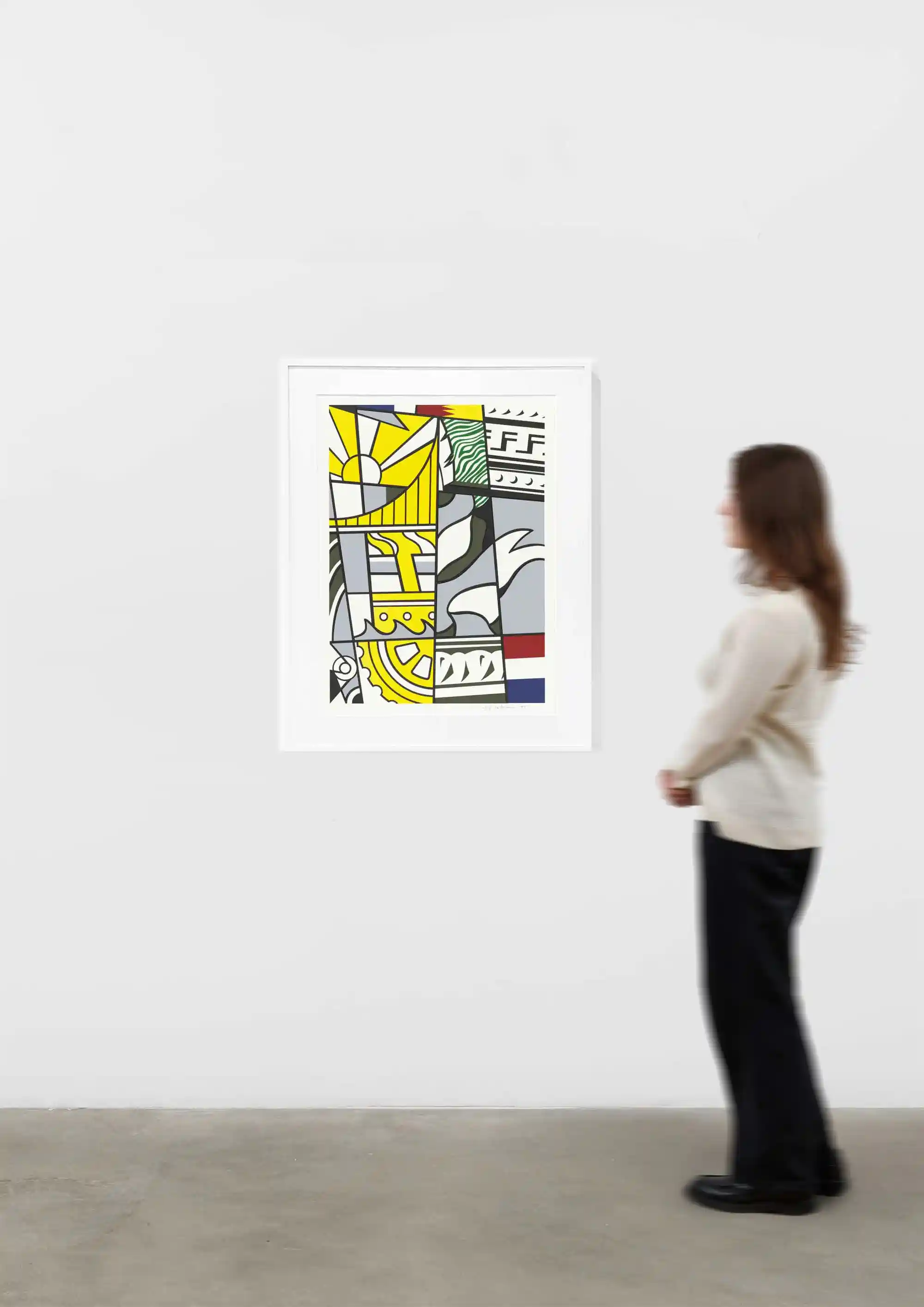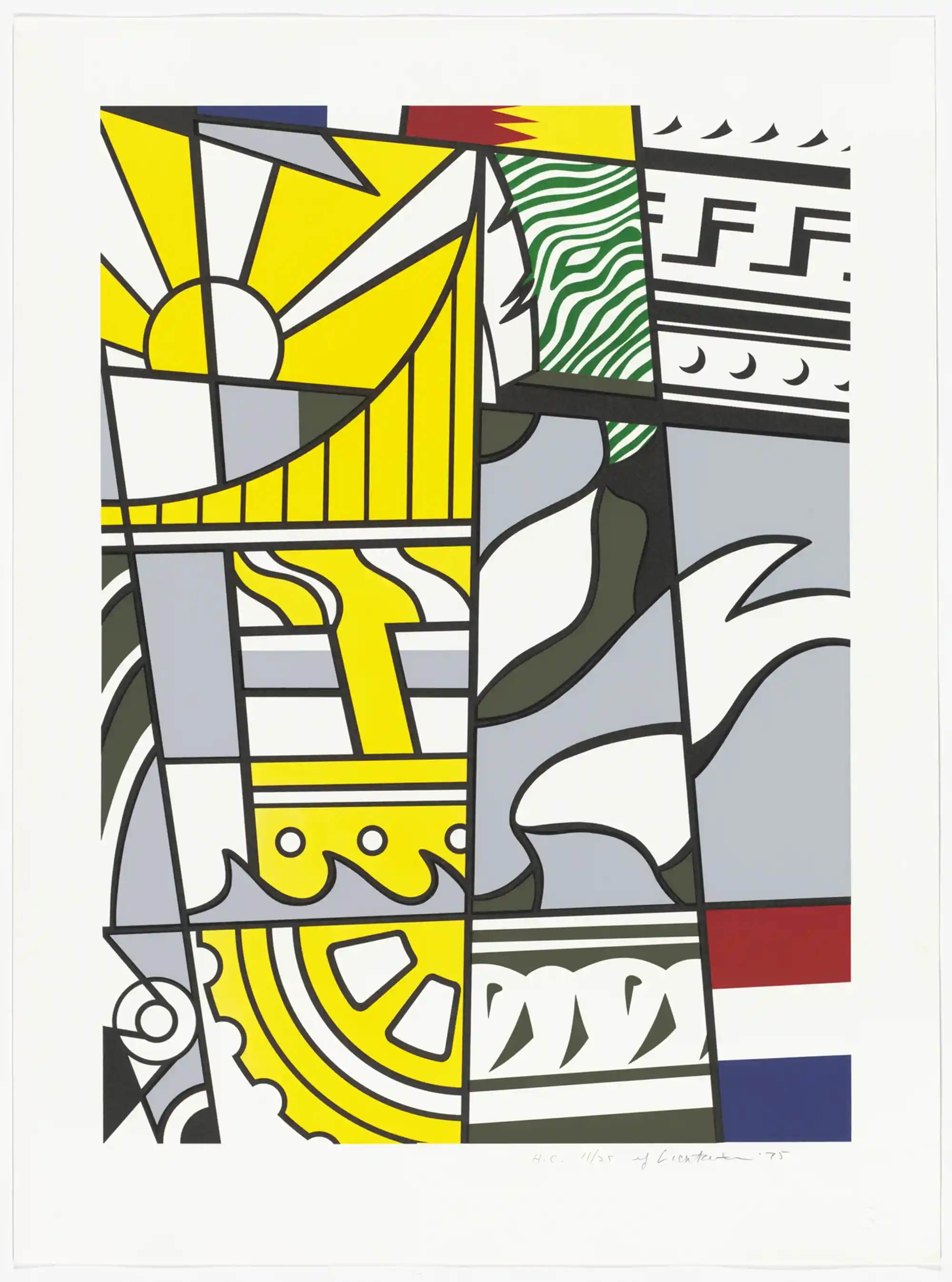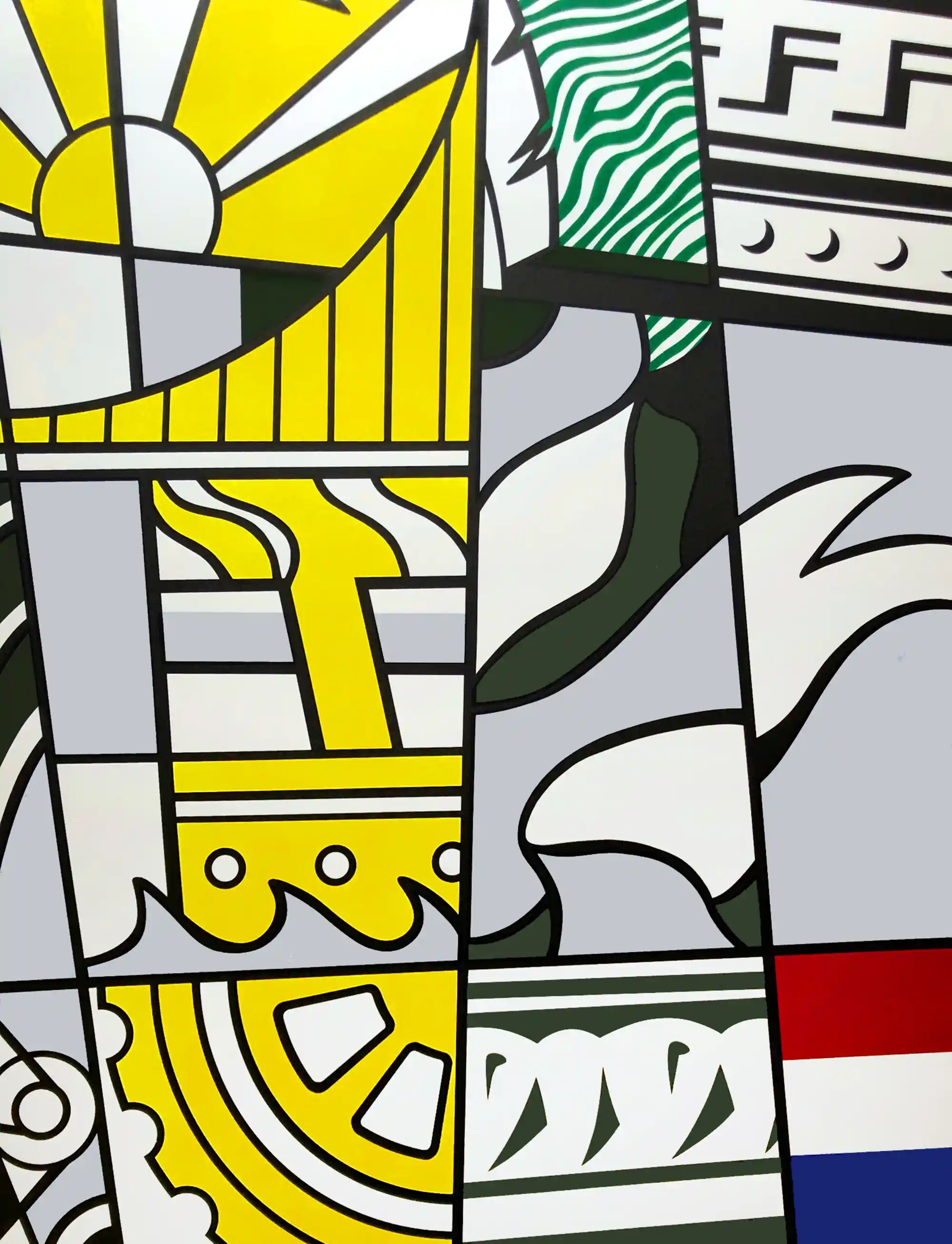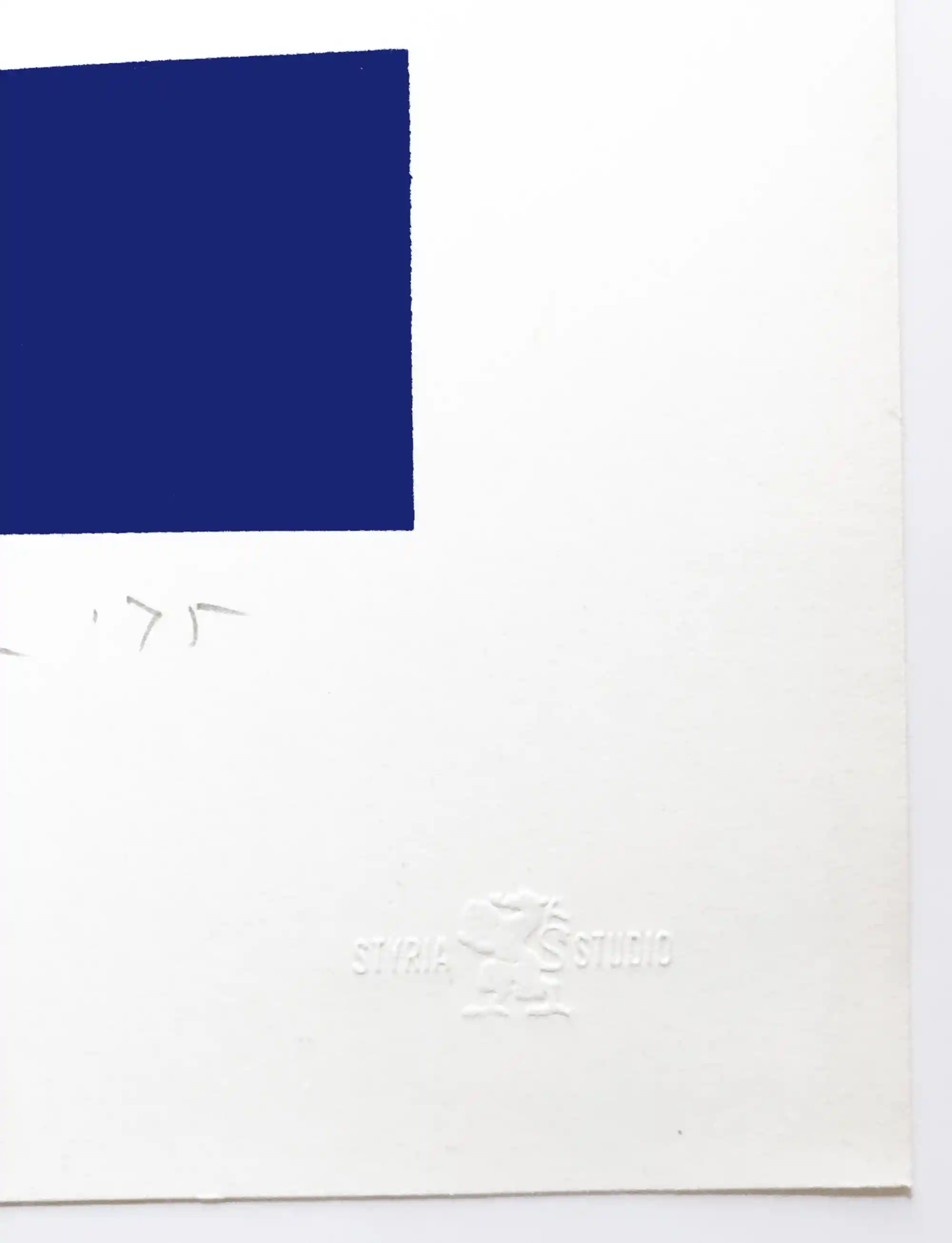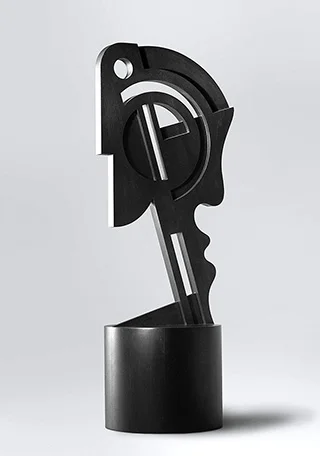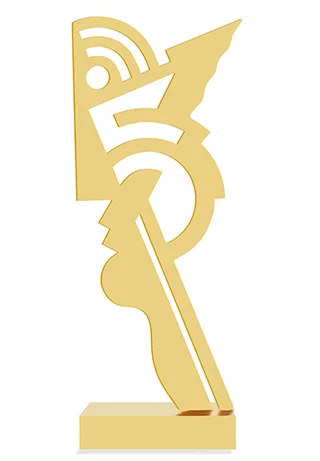Roy LichtensteinBicentennial Print
Bicentennial Print
(Corlett 136), 1975
7 color lithograph and silkscreen on white wove paper
paper: 30 1/16 x 22 5/16 inches
image: 25 x 18 1/16 inches
frame: 35 x 27 3/4 inches
edition of 200 plus 25 AP's, 25 HC's
numbered, signed and dated in pencil "rf Lichtenstein '75"
printed by Styria Studio, New York, with their blindstamp lower right
published by APC Editions, division of Chermayeff & Geismar Associates, Inc., New York (and underwritten by Mobil Oil Corporation)
Literature
M. Corlett, The Prints of Roy Lichtenstein: A Catalogue Raisonne 1948-1993, New York, 1994, no. 136 another impression reproduced in color, pg 140.
Museum collections
Indianapolis Museum of Art, Indianapolis, IN
National Gallery of Art, Washington, D.C.
The Museum of Modern Art, New York, NY
Albright-Knox, Buffalo, NY
Irish Museum of Art, Dublin
Full documentation: Roy Lichtenstein Foundation
paper: 30 1/16 x 22 5/16 inches
image: 25 x 18 1/16 inches
frame: 35 x 27 3/4 inches
edition of 200 plus 25 AP's, 25 HC's
numbered, signed and dated in pencil "rf Lichtenstein '75"
printed by Styria Studio, New York, with their blindstamp lower right
published by APC Editions, division of Chermayeff & Geismar Associates, Inc., New York (and underwritten by Mobil Oil Corporation)
Literature
M. Corlett, The Prints of Roy Lichtenstein: A Catalogue Raisonne 1948-1993, New York, 1994, no. 136 another impression reproduced in color, pg 140.
Museum collections
Indianapolis Museum of Art, Indianapolis, IN
National Gallery of Art, Washington, D.C.
The Museum of Modern Art, New York, NY
Albright-Knox, Buffalo, NY
Irish Museum of Art, Dublin
Full documentation: Roy Lichtenstein Foundation
